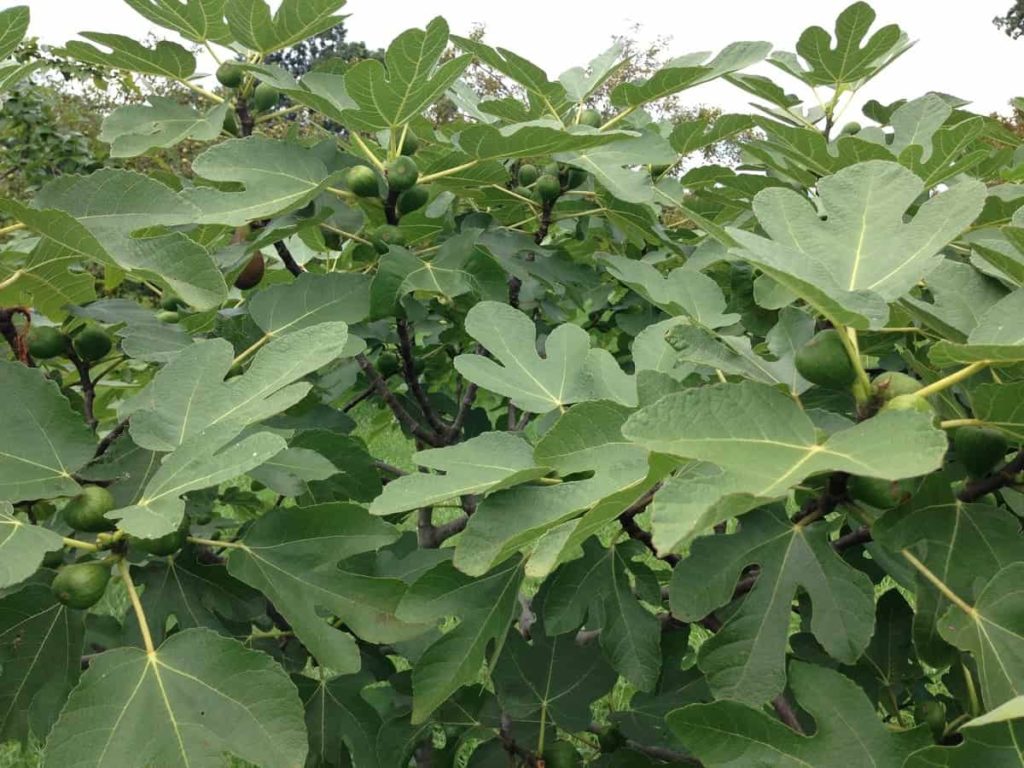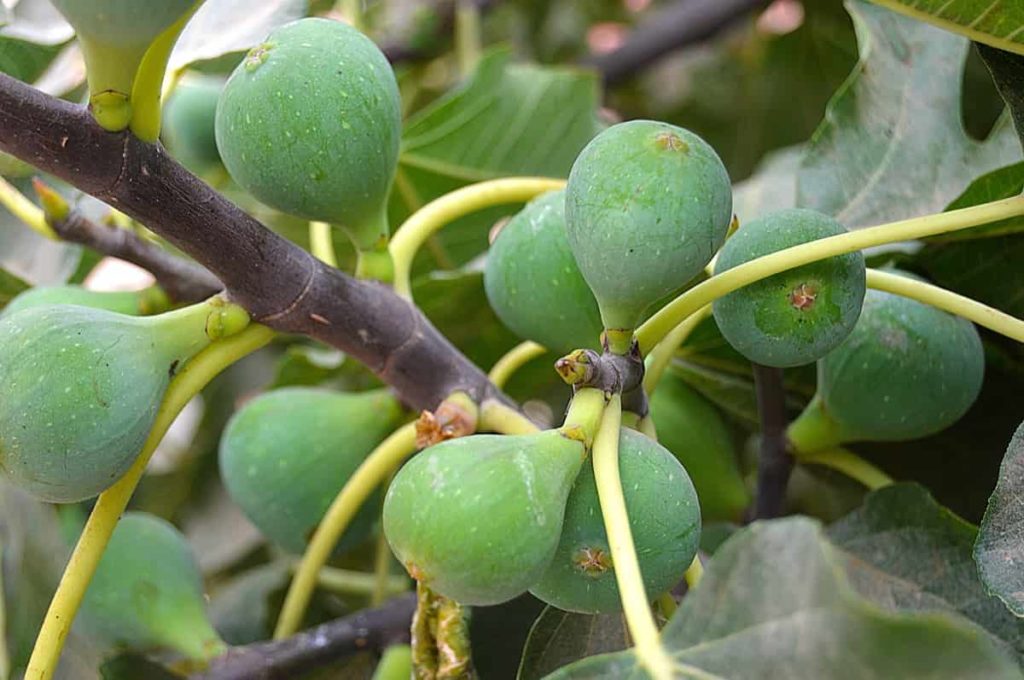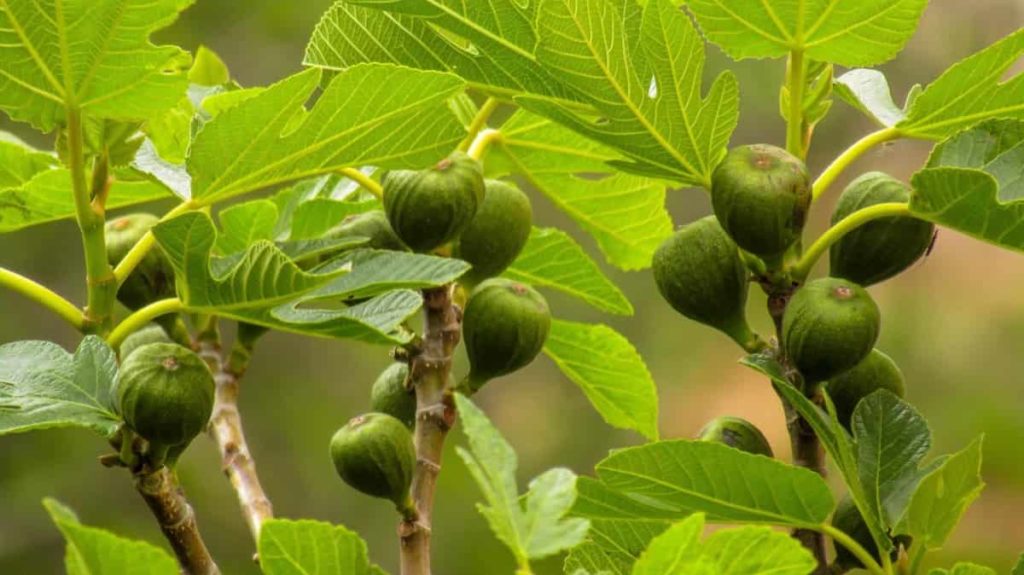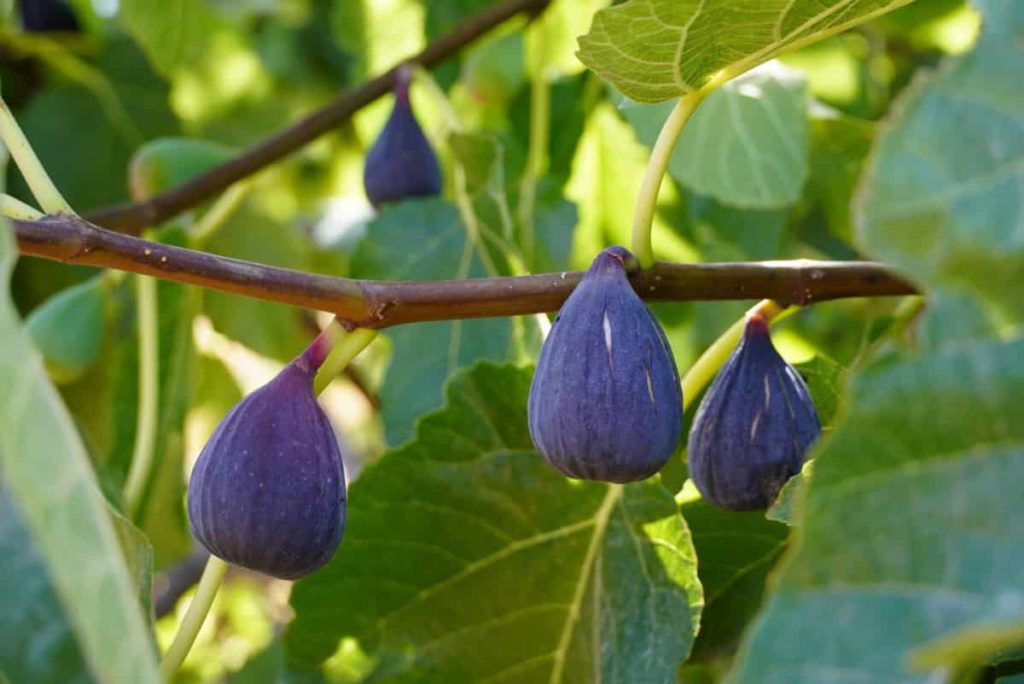Fig trees are often grown from cuttings taken from small branches, but it is also possible to grow them from seeds as long as viable seeds are used and the right conditions are provided. Remember that Fig trees also come in male and female varieties like people. Only females produce edible fruits. If the seed produces a male tree, the small fruit produced will not be edible. Some Fig trees are warm weather trees; they need protection from freezing temperatures after growing.

How to grow fig Trees/Fruits from seed to harvest
Can you grow a Fig tree from Fig seeds?
- Fig trees take 30 years to reach their maximum size. Most types of Figs, such as the fiddle leaf Fig tree, grow at a rate of 12 inches per year. Fig trees are slow growers but can survive 50 to 200 years. Trying to accelerate the growth of a Fig tree with fertilizer can weaken or kill your tree.
- Fig trees are grown from seeds. It takes three or four years to go from the seedling stage to the fruit-bearing tree. Planting Fig seeds is an easy way to propagate the Fig tree, but the results will not be true to the variety. Cutting is the only way to get the original strain replica. You can collect seeds and grow them, but don’t expect the same cultivar as the parent plant.
How long does it take for a Fig tree to start producing fruit from seed?
- Fig trees are fast-growing fruit trees that are easy to grow and maintain. Figs are usually formed yearly on the growth of new stems and ripen months later. Before that, Figs can form along stems where each leaf is attached, but they won’t ripen. Potted Figs can bear fruit quickly.
- Since Figs produce their flowers and fruits upon new growth, most Fig flowers bloom in the spring. Fruits are produced on long hot summer days. In addition, several more than 200 Fig cultivars will produce two crops in mild winter areas.
- If growing Fig trees for production, expect a good harvest within 3 to 5 years from seeds. However, you don’t have to wait so long to get any Figs. Fig cutting can produce Figs within two years.
In case you missed it: 14 Common Fig/Anjeer Plant Problems: How to Fix Them, Solutions, and Treatment

Why my Fig tree has no Figs?
- The reason behind a Fig tree does not produce fruit is its age. It will not produce fruit if the tree is not old enough to produce seeds. If your Fig tree is getting too much water, either cut your water or improve drainage in the area or the pot. Don’t let Fig trees grow in standing water. These are the most common reasons why Fig trees won’t make Fig fruits.
- Many other common causes are mostly linked to nutrients in the soil. If you feel that the above reasons are not the ones affecting your Fig tree, check and modify the soil according to the results of the soil test.
What month do Fig trees bear fruit?
- You should plant fig seedlings in spring and early in the full sun. Fruits usually ripen from August to October, depending on the cultivar and climate. Some trees produce breba, which are Fig fruit that develops during spring on the previous year’s shooting growth, followed by the main Fig crop that develops in late summer or autumn on new shoot growth and ripens.
- In areas of mild cold and very long hot summers, the Fig tree can ripen two crops in one season, the first in early summer and the second in late summer or autumn.
- Fig trees produce fruit in early May and continue as long as the first frost (November in some areas). Some varieties of Figs produce fruit twice a year: once in spring or summer and once in autumn. Of course, depending on the variety, your Fig tree can take longer to bear fruit.
How do you germinate a Fig seed?
- Get a fresh Fig fruit to harvest Fig seeds, cut it in half, remove the pulp and seeds and soak it for a day or two. If seeds sink to the bottom of the container, they are viable seeds. The rest can be rejected. The viable seed has already absorbed moisture and will be ready to crack and germinate rapidly.
- Prepare a planting medium of equal parts peat, perlite, and fine volcanic rock, and place it flat. Moisten the medium and then mix the seeds with horticultural sand. Spread the mixture of sand seeds on the flat surface. Place the tray where it’s hot and get at least six hours of sunlight daily.
- You should cover the container with plastic wrap and place it on sunny windows. Figs prefer warmer climates, so use a growing lamp to start things if you don’t have sunny windows. Keep the seeds moist by watering them with a spray bottle.
- You will see Fig seeds germinate in about one to two weeks. Keep them lightly moist and warm. You should transplant them into individual pots once the plants have two sets of true leaves and are a few inches high.
In case you missed it: Best Fertilizer for Fig trees/Anjeer: Organic, Homemade, Liquid, Natural, NPK, Compost, How and When to Apply

Should Fig trees be pruned?
- Fig trees can grow up to 3 meters long and 4 meters wide, so you must prune your mature Fig tree to keep it manageable, especially if it is planted in the ground. In addition, Fig trees produce their fruit on year-old wood, so you can encourage its fruit by trimming the old wood.
- Figs can be pruned as shrubs and kept small, allowing them to grow in the smallest backyard spaces. You can prune Fig trees, but they’re quite flexible, so more aggressive pruning shouldn’t hurt as much as during a dormant period. Avoid cutting more than 25 percent of all trees annually to keep them healthy.
- When the Fig tree is first planted, you should trim the Fig tree by about half. This will make the tree focus on developing its roots and being well established.
- Wait until the dormant season, late winter, or early spring before pruning. This will limit the amount of bleeding sap from the tree, thereby reducing the damage from pruning. Start by removing any suckers or smaller branches that grow near the tree trunk.
- It is essential to cut your Fig tree in its first year, but plan to keep cutting it next year and the following year. Cutting down your Fig tree during dormancy will produce a more productive growing season and fresh fruit starting in early summer.
- If you don’t prune branches, they will drain energy from the central, healthy tree, and your Fig tree will gradually weaken and result in a smaller yield.
Do Fig trees need a lot of water?
- Allow the tree to dry a little between the water. Remember to water slowly and deeply. Every ten days to two weeks are enough.
- Generally, Fig trees need at least 1 to 1 1/2 inches of water a week. Check the leaves of the tree, if they start turning yellow and drooping, it is a sign that the tree needs to be watered. Keep the soil moist but do not soak it. You should place a layer of mulch around the tree can help maintain moisture.
- Don’t ask the plant to grow in heavy soil that doesn’t drain, and it doesn’t like wet feet. Fig trees require moisture during the growing season, so Figure on irrigation for supplementary water. Bark mulching would be a great idea to conserve moisture.
- They are more likely to die from more water than from underwatering. Although plants are dormant, it is important to strike the right balance in water: enough that the dormant trees do not dry up and die, yet not too much that the roots rot. You should usually check them once a month.
Do Figs need full sun?
- Your Fig trees will need full sun as possible for large, juicy fruit. While Fig trees prefer a warm, dry climate, they require frequent watering during these periods to prevent fruit drops. Fig tree roots are close to the surface of the soil, so they will dry easily under particularly hot, dry conditions.
- Mature plants require at least 7 to 8 hours of sunlight daily. So, make sure your Fig has sunny space in your garden for the best results and the largest plant size.
- Choose a place that provides at least six hours of sun per day. In colder areas, help survive the winter by giving Figs a southern exposure or keeping them close to a south-facing wall that will retain heat.
- You’ll have the best results if the trees are kept in full sunlight.
What soil do Figs like?
- Soil should be moisture retentive and well-draining; Figs thrive in any soil with good drainage. At maturity, the height and spread can be 6.5 feet x 10 to 12 feet wide.
- Fig trees grow best in well-drained, organically rich soils, but they will grow on many other soil types and tolerate heavy clay soils if the drainage is good. It will be worth your time to mix native soils with some organic fertilizers in soils with low fertility or compact soils.
- Fig tree likes organically rich soil that is consistently moist and well drained. The best option for growing containers is a standard soil potting mix. Potting mixes are specially made to grow pot plants, are lightweight, retain moisture and provide plenty of air space around the roots.
In case you missed it: Fig Gardening For Beginners – How To Start, FAQs

How deep do Fig roots go?
- Dwarf rootstock roots grow to a depth of 1 to 2 feet, while full-size Fig trees can grow deep roots from 3 to 3 feet. The depth of the Fig tree’s roots depends on the moisture conditions.
- Figs trees have shallow fibrous roots, although depending on the location, the roots can spread laterally and vertically. Figs can have a single stemmed tree, such as growth or multi-stemmed bush-like growth, and often send suckers from the tree’s base and spread branches that are low to the ground.
- Fig trees generally require a soil depth of 1 to 1.5 meters. The root network of a tree can be several thousand meters long, so the root of a regular Fig tree can hardly compete.
Can Fig trees grow in pots?
- The container suitable for planting Fig trees should be large. Half the whisky barrels are ideal, but any container is large enough to accommodate the root ball. You can always transplant the tree in later years as it moves beyond the container.
- This naturally limits the growth of roots and means that in temperate climates, where hard frosts can damage embryonic fruits, it is easier to cover and move plants in winter.
- Growing Figs in containers are quite easy, especially if you choose a dwarf variety like a small Fig tree. But even large Figs can be grown in a reasonably sized container with extra pruning.
Do Fig trees have 2 crops?
- Fig trees produce two crops every year, but only one of them can be edible. The first crop, called the breba crop, is relatively at the beginning of the year on the previous year’s growth. These fruits are often small, acidic, and low in structure but can be useful for preservation.
- Fig trees can take 3 to 4 years to produce a viable crop. When they do so, Fig trees produce crops twice a year. The second crop is usually the most productive, producing edible Figs. The harvest time is generally between June and September.
How many Figs does a Fig tree produce?
- Usually, a mature Fig tree 3 to 4 years old will produce 20 to 60 Figs per tree in a year. Assuming that each Fig weighs an average of 39 grams, you would expect 680 grams to 2.3 kg or 48 to 75 kg per tree Figs in a year.
- Some varieties produce one Fig crop each year, while some produce two. Figs are usually formed yearly on the growth of new stems and ripen months later. Fig trees take three to four years to start ripening.
What type of fertilizer do Fig trees like?
- Fig trees generally don’t need fertilizer unless they lack nutrients. Trees placed in containers require fertilizer more often than trees planted in the ground.
- Fertilize your young tree once a month in 28 grams doses as soon as it produces leaves, and stop fertilizing before August. Established trees require less feeding, preferably 151 grams for every foot of height, once at the end of winter, once halfway through the spring, and then one last fertilizing at the height of summer.
- It is better to provide fertilizer for Fig trees only when they show signs of slow growth or yellow leaves, but there are some exceptions where Fig trees need regular feeding.
- To fertilize your Fig trees, fertilize them with a slow release that is well balanced, such as formula 10-10-10 or 8-8-8, once in spring and once in autumn.
How do you winterize a Fig tree?
- Place the container in an insulated unheated preferred dark room, garage, or cool basement. If the place is not dark, you can cover the Figs. If you have a controlled greenhouse, you may not need to cover them. Water them monthly until they get moist, so the roots don’t dry completely.
- While some planting tricks (such as putting your Fig against a south-facing wall) can help Figs survive most winters without extra care, wrapping them in layers of burlap and fallen leaves in late autumn or early winter will prevent them from dying back very severely during the cold winter.
In case you missed it: Fig Growing Tips, Techniques, Ideas, and Secrets

Why are my Figs not sweet?
- Raw Figs can be dry and lacking in sweetness. Most people eat a raw Fig only once before deciding to wait and allow the Figs to ripen entirely before harvesting.
- If your Figs are shriveling, chances are they’re not getting the nutrients they need to make glucose, the good stuff that helps ripe the fruit into sweet, soft, and juicy Figs. Though Fig trees are quite tolerant of their soil, they need to be drained appropriately so that the plant gets enough oxygen.
- Green Figs will not ripen from the tree. The Figs selected before full ripening will continue to soften and become sweet if left in a dry place with a moderate temperature.
How much room does a Fig tree need?
- If you plant more than one tree, make sure there are 5 to 6 meters between them. If you want to train trees to grow bushy and low, plant them within 3 meters. Space Fig trees are at least 20 feet away from buildings or other trees.
- You should leave a couple of inches of space between the roots of the Fig plant and the surrounding walls of the container at the time of planting. Over time, Fig roots will fill the container, and you can transplant them into large pots.
How do I grow bigger Figs?
- Fig trees require a little pruning. Remove all dead, diseased, or weak branches during the dormant season to encourage growth. You must thin the fruit to encourage larger Figs. In colder areas, bring container-grown Fig trees indoors for the winter.
- Figs will tolerate most types of soil as long as it is well drained. Poor drainage reduces the amount of oxygen available to the tree and results in too small Figs and fruits that don’t ripen or can drop. Avoid areas where water has stood for more than 24 hours.
How do I ripen green Figs?
The best way to ripen Figs quickly is to remove as many stress points as possible from the tree. To avoid Figs that won’t be ripe, make sure the tree has enough water, especially in extreme heat. Another way to prevent Figs that don’t ripen is to fertilize your Fig tree regularly.
Why do Figs drop their fruit?
Drought or inconsistent water is the most common reason why Fig fruit falls from the tree. This is why this problem of Fig trees usually affects Fig trees in containers. To correct this, make sure your Fig is getting enough water. If proper care is taken, Fig trees usually produce a generous bounty of fruit. Some of the causes of the Fig tree dropping unripe fruit from the tree are poor cultural conditions, pests, and diseases can.
Do you need two Fig trees to produce fruit?
- You don’t have to plant multiple trees. A Fig tree will produce fruit on its own. Figs are pollinated by tiny wasps that enter the fruit and leave the fruit while it is growing.
- Figs are self-pollinated, so you don’t need multiple plants to get fruit, but you must avoid crowded plants if you add more than one plant to your yard. Some Figs have invasive roots that can damage pipes, sidewalks, or driveways.
In case you missed it: How to Start Home Gardening in Virginia (VA) for Beginners: From Scratch for Indoors, Outdoors, Raised Beds, Backyards, and Containers

How do I know when to pick Figs?
- Fig fruit ripening signs include sight, touch, and taste. Visually ripened Figs hang on a tree or bush, have a more distinctive size than immature green fruit, and change color except for a few varieties. By touch, the ripened Figs should soften when gently squeezed.
- Ripened Figs are soft and squishy, like a partially filled water balloon. Squeeze your Fig to test its ripening. If the skin doesn’t give under your fingers, your Fig isn’t ripened enough.
- You can tell that it is time to harvest Figs when the neck of the fruits is bent, and the fruits hang down. If you pick Fig fruit very quickly, it will taste terrible. Ripen fruit is sweet and delicious. If the fruit is still perpendicular to the stem, it is not ready to pick.
Conclusion
Growing a Fig tree from its seed is an easy and popular way. Seeds take time to perform compared to other methods. Fig trees need warm weather and a lot of sunshine to produce large Fig fruits. Giving them their essential needs will help your Fig tree thrive, regardless of its species.
- Broccoli Seed Germination and Selection
- Asparagus Seed Germination and Variety Selection
- Seasonal Flower Gardening: Best Practices for Spring, Summer, Fall, and Winter
- How to Grow Hibiscus from Flower
- Plantation Ideas for Home Decoration: A Beginners Guide
- Flower Garden Designs and Layouts for Beginners
- Planting and Spacing Techniques in Papaya: A Beginner’s Guide
- Growing Gold: Essential Techniques for Planting Pineapples
- How to Make Kalanchoe Plant Bushy: Home Remedies and Solutions
- 11 Reasons Why Your Gardenia is Not Blooming: Home Remedies and Solutions
- Eco Elegance: The Guide to Designing a Drought-Tolerant Landscape
- Gardening on a Slope: Strategies for Hillside Landscaping
- Nourish and Flourish: Top Organic Mulches for Thriving House Plants
- Everything You Want to Know about Indian Mogra Flower: Discover Uses and Growing
- Green Thumb Success: Expert Tips for Cultivating Greenhouse Pumpkins All Year Round
- Maximize Growth & Flavor: The Ultimate Guide to Companion Planting in Herb Gardens
- How to Control Rhododendron Problems Naturally: Home Remedies and Organic Ways to Fix Them
- Natural Magic: The Remarkable Benefits of Cinnamon for Plants
- Best Steps to Revive Dying Tulip with Natural and Organic Treatment
- 10 Reasons Why Your Angel Trumpet is Not Blooming: Remedies and Treatment
- How to Fix Periwinkle Leaf and Flower-Related Problems: Natural Remedies and Solutions
- How to Fix Zinnias Leaf and Flower Problems: Discover Natural and Home Remedies
- Organic Steps to Induce Lemon Tree Flowers: A Comprehensive Guide
- Bloom Booster: Crafting the Perfect Homemade Bougainvillea Fertilizer
- Optimizing Growth: A Guide to Applying NPK Fertilizer for Potted Plants
- 10 Best Homemade Fertilizers for Rubber Plant: DIY Recipes and Application Method
- How to Boost Female Pumpkin Flowers: Effective Steps for More Flowers and High Yields
- Transform Your Indoor Garden: Top Benefits of Pink Salt for Houseplants
- 10 Best Homemade Fertilizers for Peacock Plants (Calathea): Easy DIY Guide
- Unlock Blooms: 9 Reasons Why Your Potted Chrysanthemum is Not Blooming
- 8 Reasons Why Your Potted Hibiscus is Not Blooming: Fix it with Simple Solutions
- Unlock Blooms: 9 Key Reasons Your Potted Frangipani Won’t Flower
- 10 Reasons Why Is My Ice Plant Not Blooming: Remedies and Treatment
- 10 Reasons Why My Potted Hydrangea Not Blooming: Treatment and Remedies
- 10 Reasons Why is My Wisteria Not Blooming: Remedies and Treatment
- 10 Reasons Why is My Goldfish Plant Not Blooming: Remedies and Treatment